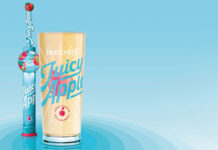Careful attention to product range can pay dividends in whisky, say drinks firms

KNOWLEDGEABLE bar staff, innovative serves and a diverse range of products could help licensees maximise whisky sales in their outlets this year.
The category – both domestic and imported – is said to have been on a roll lately, with consumers taking more of an interest in blended, single malt and imported whiskies.
And whisky firms say, with the Commonwealth Games, Ryder Cup and Homecoming Scotland expected to cause a spike in visitor numbers, it’s worth taking the time to review the range of products on the back-bar.
“There has been a huge growth in the number of whiskies on offer in the on-trade,” said Euan Mitchell, managing director of Isle of Arran Distillers.
“Any bar worth its salt will have a decent selection rather than just a few of the usual suspects. A good selection is no longer the preserve of the specialist whisky bars.”
Jane Ashley, UK brand manager for Bowmore at Cellar Trends, said a successful whisky range should include three key elements.
“First off, ensure coverage of each region,” said Ashley.
“Secondly, investigate imported whiskies; tastes are broadening and customers are more willing, indeed eager, to try new things.
“Finally, there should be at least two levels of options in each of these categories: the entry level and the up sell. The former is the affordable introduction to that style, while the latter brings complexity and an increased margin for the seller.”
In terms of Scotch, stocking at least one whisky from each of Scotland’s whisky regions is “a must”, according to Chris Leggat, commercial director at independent whisky bottler Douglas Laing & Co.
“It encourages up-selling along with a bit of education – allowing the consumer to compare and contrast the different regions,” said Leggat.
And stocking both entry-level and premium products is equally important for imported whiskey.
The range should be able to educate the consumer as well as generate discussion.
“For each category, I’d recommend having a balanced selection including a house spirit, a few favourite brands that all offer something different, and a luxury, premium brand which you can use to encourage your aspirational customers to trade-up,” said Andrea Montague, whisky ambassador for Diageo Reserve, whose portfolio includes Bulleit Bourbon.
Offering ‘whisky flights’ that cover different styles and profiles can be an effective way to highlight the diversity on offer, said Scott Adamson, sales and marketing executive at Tomatin Distillery.
“The range should be able to help educate the consumer as well as generate discussion about the section,” said Adamson.
Introducing unusual serves can also encourage consumers to take a closer look at the category, according to Phil Keene UK on-trade sales director at Whyte & Mackay.
“In addition to neat or over ice, licensees could offer whisky cocktails which are growing in popularity, specifically those including bitters,” said Keene.
He highlighted a couple of whisky cocktails created by Edinburgh bar Monteith’s, and which feature Whyte & Mackay’s Jura single malt. One combines Jura’s Prophecy expression with Punt e Mes, cinnamon syrup and orange bitters, while the other mixes Jura 16 year old with fresh orange juice, honey syrup and chocolate orange bitters.
While not every outlet will have the expertise to create complex whisky cocktails, knowledge of the products behind the bar is vital, say firms.
“Ensuring bar staff are knowledgeable when it comes to the range and spirit choices on offer is vital and can prompt consumers to change their usual spirit brand for a more premium or alternative choice,” said Crispin Stephens, trade marketing manager for Brown-Forman, the company behind Jack Daniel’s and Woodford Reserve.
“Most consumers are receptive to recommendations and therefore staff should always be able to suggest new spirits and serves with a reason for the change.”
Training can also help bar staff to challenge outdated consumer perceptions, according to Jonathan Cornthwaite, senior brand manager for Hudson Whiskey at First Drinks.
“Above all, knowledge is key, and as some consumer perceptions of this category may be ingrained and old fashioned, it’s up to the bartender to educate the customer and encourage trial,” he said.
























